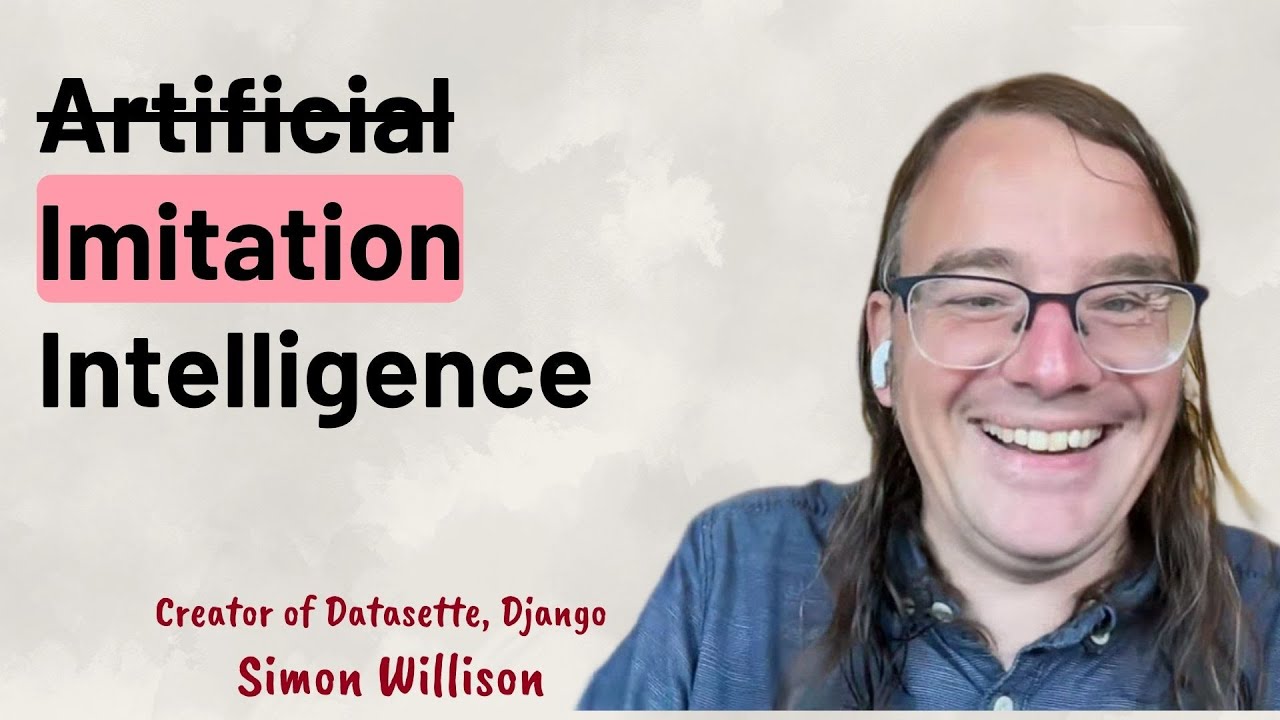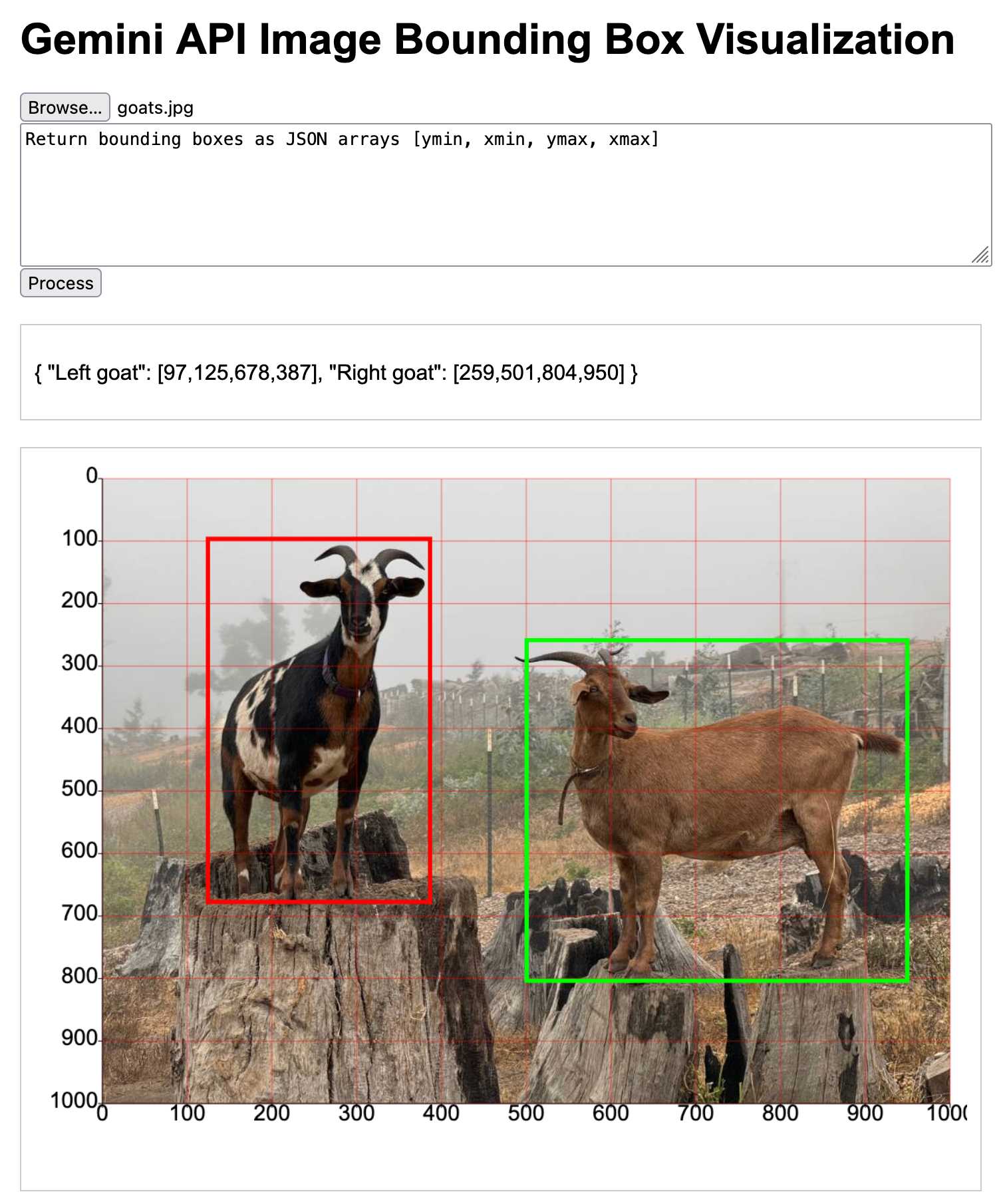1,554 posts tagged “generative-ai”
Machine learning systems that can generate new content: text, images, audio, video and more.
2024
In the future, we won't need programmers; just people who can describe to a computer precisely what they want it to do.
I think individual creators or publishers tend to overestimate the value of their specific content in the grand scheme of [AI training]. […]
We pay for content when it’s valuable to people. We’re just not going to pay for content when it’s not valuable to people. I think that you’ll probably see a similar dynamic with AI, which my guess is that there are going to be certain partnerships that get made when content is really important and valuable. I’d guess that there are probably a lot of people who have a concern about the feel of it, like you’re saying. But then, when push comes to shove, if they demanded that we don’t use their content, then we just wouldn’t use their content. It’s not like that’s going to change the outcome of this stuff that much.
Llama 3.2. In further evidence that AI labs are terrible at naming things, Llama 3.2 is a huge upgrade to the Llama 3 series - they've released their first multi-modal vision models!
Today, we’re releasing Llama 3.2, which includes small and medium-sized vision LLMs (11B and 90B), and lightweight, text-only models (1B and 3B) that fit onto edge and mobile devices, including pre-trained and instruction-tuned versions.
The 1B and 3B text-only models are exciting too, with a 128,000 token context length and optimized for edge devices (Qualcomm and MediaTek hardware get called out specifically).
Meta partnered directly with Ollama to help with distribution, here's the Ollama blog post. They only support the two smaller text-only models at the moment - this command will get the 3B model (2GB):
ollama run llama3.2
And for the 1B model (a 1.3GB download):
ollama run llama3.2:1b
I had to first upgrade my Ollama by clicking on the icon in my macOS task tray and selecting "Restart to update".
The two vision models are coming to Ollama "very soon".
Once you have fetched the Ollama model you can access it from my LLM command-line tool like this:
pipx install llm
llm install llm-ollama
llm chat -m llama3.2:1b
I tried running my djp codebase through that tiny 1B model just now and got a surprisingly good result - by no means comprehensive, but way better than I would ever expect from a model of that size:
files-to-prompt **/*.py -c | llm -m llama3.2:1b --system 'describe this code'
Here's a portion of the output:
The first section defines several test functions using the
@djp.hookimpldecorator from the djp library. These hook implementations allow you to intercept and manipulate Django's behavior.
test_middleware_order: This function checks that the middleware order is correct by comparing theMIDDLEWAREsetting with a predefined list.test_middleware: This function tests various aspects of middleware:- It retrieves the response from the URL
/from-plugin/using theClientobject, which simulates a request to this view.- It checks that certain values are present in the response:
X-DJP-Middleware-AfterX-DJP-MiddlewareX-DJP-Middleware-Before[...]
I found the GGUF file that had been downloaded by Ollama in my ~/.ollama/models/blobs directory. The following command let me run that model directly in LLM using the llm-gguf plugin:
llm install llm-gguf
llm gguf register-model ~/.ollama/models/blobs/sha256-74701a8c35f6c8d9a4b91f3f3497643001d63e0c7a84e085bed452548fa88d45 -a llama321b
llm chat -m llama321b
Meta themselves claim impressive performance against other existing models:
Our evaluation suggests that the Llama 3.2 vision models are competitive with leading foundation models, Claude 3 Haiku and GPT4o-mini on image recognition and a range of visual understanding tasks. The 3B model outperforms the Gemma 2 2.6B and Phi 3.5-mini models on tasks such as following instructions, summarization, prompt rewriting, and tool-use, while the 1B is competitive with Gemma.
Here's the Llama 3.2 collection on Hugging Face. You need to accept the new Llama 3.2 Community License Agreement there in order to download those models.
You can try the four new models out via the Chatbot Arena - navigate to "Direct Chat" there and select them from the dropdown menu. You can upload images directly to the chat there to try out the vision features.
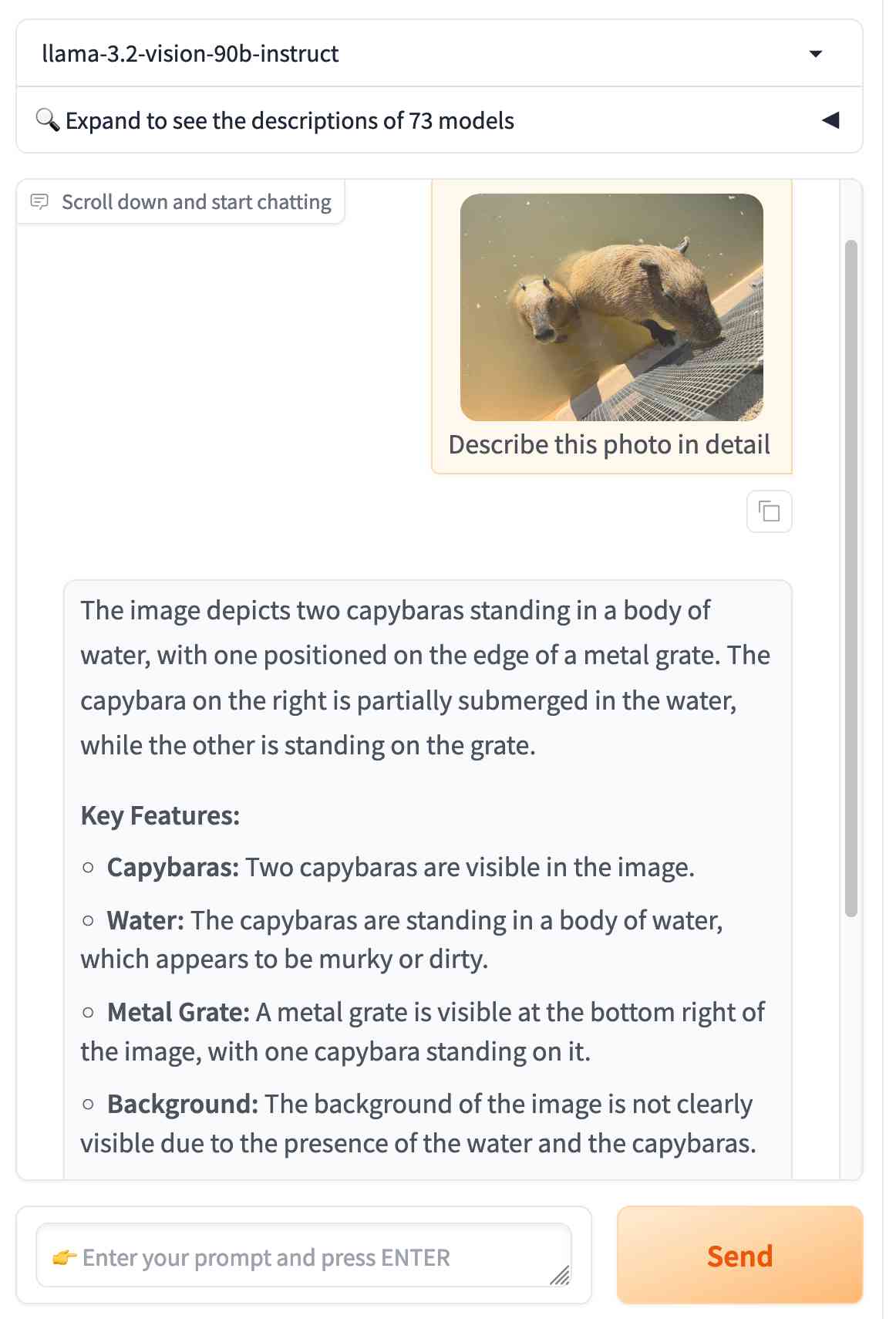
Solving a bug with o1-preview, files-to-prompt and LLM.
I added a new feature to DJP this morning: you can now have plugins specify their middleware in terms of how it should be positioned relative to other middleware - inserted directly before or directly after django.middleware.common.CommonMiddleware for example.
At one point I got stuck with a weird test failure, and after ten minutes of head scratching I decided to pipe the entire thing into OpenAI's o1-preview to see if it could spot the problem. I used files-to-prompt to gather the code and LLM to run the prompt:
files-to-prompt **/*.py -c | llm -m o1-preview "
The middleware test is failing showing all of these - why is MiddlewareAfter repeated so many times?
['MiddlewareAfter', 'Middleware3', 'MiddlewareAfter', 'Middleware5', 'MiddlewareAfter', 'Middleware3', 'MiddlewareAfter', 'Middleware2', 'MiddlewareAfter', 'Middleware3', 'MiddlewareAfter', 'Middleware5', 'MiddlewareAfter', 'Middleware3', 'MiddlewareAfter', 'Middleware4', 'MiddlewareAfter', 'Middleware3', 'MiddlewareAfter', 'Middleware5', 'MiddlewareAfter', 'Middleware3', 'MiddlewareAfter', 'Middleware2', 'MiddlewareAfter', 'Middleware3', 'MiddlewareAfter', 'Middleware5', 'MiddlewareAfter', 'Middleware3', 'MiddlewareAfter', 'Middleware', 'MiddlewareBefore']"The model whirled away for a few seconds and spat out an explanation of the problem - one of my middleware classes was accidentally calling self.get_response(request) in two different places.
I did enjoy how o1 attempted to reference the relevant Django documentation and then half-repeated, half-hallucinated a quote from it:
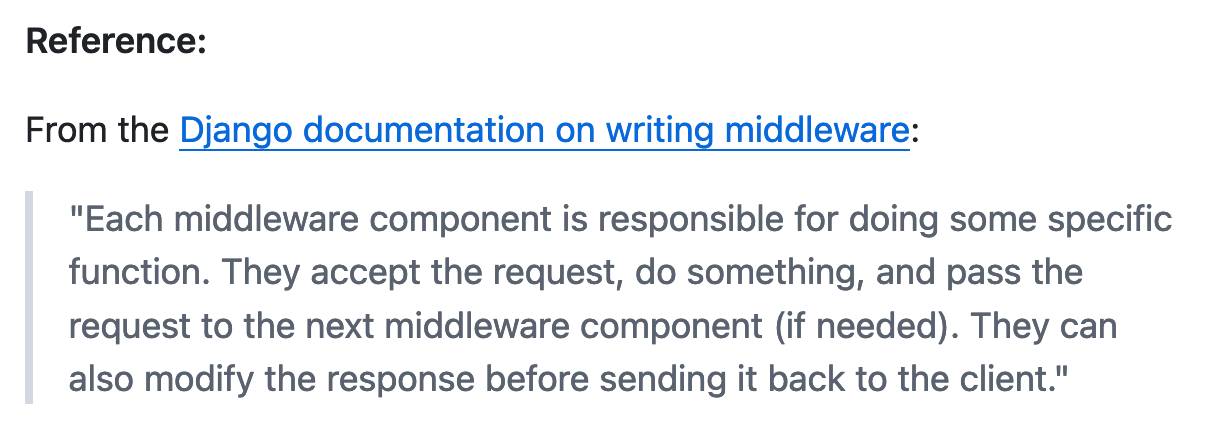
This took 2,538 input tokens and 4,354 output tokens - by my calculations at $15/million input and $60/million output that prompt cost just under 30 cents.
The Pragmatic Engineer Podcast: AI tools for software engineers, but without the hype – with Simon Willison. Gergely Orosz has a brand new podcast, and I was the guest for the first episode. We covered a bunch of ground, but my favorite topic was an exploration of the (very legitimate) reasons that many engineers are resistant to taking advantage of AI-assisted programming tools.
Updated production-ready Gemini models.
Two new models from Google Gemini today: gemini-1.5-pro-002 and gemini-1.5-flash-002. Their -latest aliases will update to these new models in "the next few days", and new -001 suffixes can be used to stick with the older models. The new models benchmark slightly better in various ways and should respond faster.
Flash continues to have a 1,048,576 input token and 8,192 output token limit. Pro is 2,097,152 input tokens.
Google also announced a significant price reduction for Pro, effective on the 1st of October. Inputs less than 128,000 tokens drop from $3.50/million to $1.25/million (above 128,000 tokens it's dropping from $7 to $5) and output costs drop from $10.50/million to $2.50/million ($21 down to $10 for the >128,000 case).
For comparison, GPT-4o is currently $5/m input and $15/m output and Claude 3.5 Sonnet is $3/m input and $15/m output. Gemini 1.5 Pro was already the cheapest of the frontier models and now it's even cheaper.
Correction: I missed gpt-4o-2024-08-06 which is listed later on the OpenAI pricing page and priced at $2.50/m input and $10/m output. So the new Gemini 1.5 Pro prices are undercutting that.
Gemini has always offered finely grained safety filters - it sounds like those are now turned down to minimum by default, which is a welcome change:
For the models released today, the filters will not be applied by default so that developers can determine the configuration best suited for their use case.
Also interesting: they've tweaked the expected length of default responses:
For use cases like summarization, question answering, and extraction, the default output length of the updated models is ~5-20% shorter than previous models.
Markdown and Math Live Renderer.
Another of my tiny Claude-assisted JavaScript tools. This one lets you enter Markdown with embedded mathematical expressions (like $ax^2 + bx + c = 0$) and live renders those on the page, with an HTML version using MathML that you can export through copy and paste.
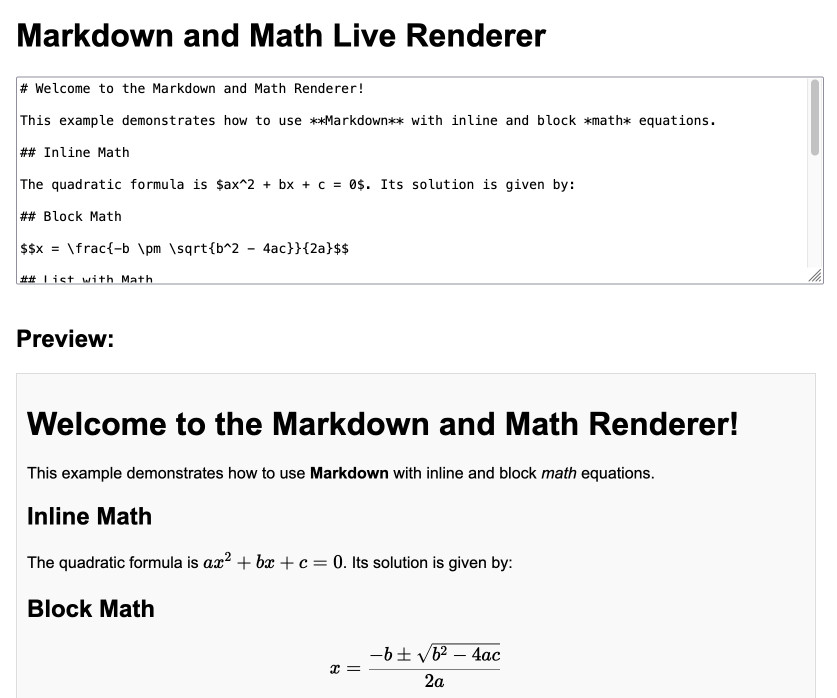
Here's the Claude transcript. I started by asking:
Are there any client side JavaScript markdown libraries that can also handle inline math and render it?
Claude gave me several options including the combination of Marked and KaTeX, so I followed up by asking:
Build an artifact that demonstrates Marked plus KaTeX - it should include a text area I can enter markdown in (repopulated with a good example) and live update the rendered version below. No react.
Which gave me this artifact, instantly demonstrating that what I wanted to do was possible.
I iterated on it a tiny bit to get to the final version, mainly to add that HTML export and a Copy button. The final source code is here.
YouTube Thumbnail Viewer.
I wanted to find the best quality thumbnail image for a YouTube video, so I could use it as a social media card. I know from past experience that GPT-4 has memorized the various URL patterns for img.youtube.com, so I asked it to guess the URL for my specific video.
This piqued my interest as to what the other patterns were, so I got it to spit those out too. Then, to save myself from needing to look those up again in the future, I asked it to build me a little HTML and JavaScript tool for turning a YouTube video URL into a set of visible thumbnails.
I iterated on the code a bit more after pasting it into Claude and ended up with this, now hosted in my tools collection.
Notes on using LLMs for code
I was recently the guest on TWIML—the This Week in Machine Learning & AI podcast. Our episode is titled Supercharging Developer Productivity with ChatGPT and Claude with Simon Willison, and the focus of the conversation was the ways in which I use LLM tools in my day-to-day work as a software developer and product engineer.
[... 861 words]Introducing Contextual Retrieval (via) Here's an interesting new embedding/RAG technique, described by Anthropic but it should work for any embedding model against any other LLM.
One of the big challenges in implementing semantic search against vector embeddings - often used as part of a RAG system - is creating "chunks" of documents that are most likely to semantically match queries from users.
Anthropic provide this solid example where semantic chunks might let you down:
Imagine you had a collection of financial information (say, U.S. SEC filings) embedded in your knowledge base, and you received the following question: "What was the revenue growth for ACME Corp in Q2 2023?"
A relevant chunk might contain the text: "The company's revenue grew by 3% over the previous quarter." However, this chunk on its own doesn't specify which company it's referring to or the relevant time period, making it difficult to retrieve the right information or use the information effectively.
Their proposed solution is to take each chunk at indexing time and expand it using an LLM - so the above sentence would become this instead:
This chunk is from an SEC filing on ACME corp's performance in Q2 2023; the previous quarter's revenue was $314 million. The company's revenue grew by 3% over the previous quarter.
This chunk was created by Claude 3 Haiku (their least expensive model) using the following prompt template:
<document>
{{WHOLE_DOCUMENT}}
</document>
Here is the chunk we want to situate within the whole document
<chunk>
{{CHUNK_CONTENT}}
</chunk>
Please give a short succinct context to situate this chunk within the overall document for the purposes of improving search retrieval of the chunk. Answer only with the succinct context and nothing else.
Here's the really clever bit: running the above prompt for every chunk in a document could get really expensive thanks to the inclusion of the entire document in each prompt. Claude added context caching last month, which allows you to pay around 1/10th of the cost for tokens cached up to your specified beakpoint.
By Anthropic's calculations:
Assuming 800 token chunks, 8k token documents, 50 token context instructions, and 100 tokens of context per chunk, the one-time cost to generate contextualized chunks is $1.02 per million document tokens.
Anthropic provide a detailed notebook demonstrating an implementation of this pattern. Their eventual solution combines cosine similarity and BM25 indexing, uses embeddings from Voyage AI and adds a reranking step powered by Cohere.
The notebook also includes an evaluation set using JSONL - here's that evaluation data in Datasette Lite.
Moshi (via) Moshi is "a speech-text foundation model and full-duplex spoken dialogue framework". It's effectively a text-to-text model - like an LLM but you input audio directly to it and it replies with its own audio.
It's fun to play around with, but it's not particularly useful in comparison to other pure text models: I tried to talk to it about California Brown Pelicans and it gave me some very basic hallucinated thoughts about California Condors instead.
It's very easy to run locally, at least on a Mac (and likely on other systems too). I used uv and got the 8 bit quantized version running as a local web server using this one-liner:
uv run --with moshi_mlx python -m moshi_mlx.local_web -q 8
That downloads ~8.17G of model to a folder in ~/.cache/huggingface/hub/ - or you can use -q 4 and get a 4.81G version instead (albeit even lower quality).
Supercharging Developer Productivity with ChatGPT and Claude with Simon Willison (via) I'm the guest for the latest episode of the TWIML AI podcast - This Week in Machine Learning & AI, hosted by Sam Charrington.
We mainly talked about how I use LLM tooling for my own work - Claude, ChatGPT, Code Interpreter, Claude Artifacts, LLM and GitHub Copilot - plus a bit about my experiments with local models.
o1 prompting is alien to me. Its thinking, gloriously effective at times, is also dreamlike and unamenable to advice.
Just say what you want and pray. Any notes on “how” will be followed with the diligence of a brilliant intern on ketamine.
Speed matters (via) Jamie Brandon in 2021, talking about the importance of optimizing for the speed at which you can work as a developer:
Being 10x faster also changes the kinds of projects that are worth doing.
Last year I spent something like 100 hours writing a text editor. […] If I was 10x slower it would have been 20-50 weeks. Suddenly that doesn't seem like such a good deal any more - what a waste of a year!
It’s not just about speed of writing code:
When I think about speed I think about the whole process - researching, planning, designing, arguing, coding, testing, debugging, documenting etc.
Often when I try to convince someone to get faster at one of those steps, they'll argue that the others are more important so it's not worthwhile trying to be faster. Eg choosing the right idea is more important than coding the wrong idea really quickly.
But that's totally conditional on the speed of everything else! If you could code 10x as fast then you could try out 10 different ideas in the time it would previously have taken to try out 1 idea. Or you could just try out 1 idea, but have 90% of your previous coding time available as extra idea time.
Jamie’s model here helps explain the effect I described in AI-enhanced development makes me more ambitious with my projects. Prompting an LLM to write portions of my code for me gives me that 5-10x boost in the time I spend typing code into a computer, which has a big effect on my ambitions despite being only about 10% of the activities I perform relevant to building software.
I also increasingly lean on LLMs as assistants in the research phase - exploring library options, building experimental prototypes - and for activities like writing tests and even a little bit of documentation.
[… OpenAI’s o1] could work its way to a correct (and well-written) solution if provided a lot of hints and prodding, but did not generate the key conceptual ideas on its own, and did make some non-trivial mistakes. The experience seemed roughly on par with trying to advise a mediocre, but not completely incompetent, graduate student. However, this was an improvement over previous models, whose capability was closer to an actually incompetent graduate student.
It's a bit sad and confusing that LLMs ("Large Language Models") have little to do with language; It's just historical. They are highly general purpose technology for statistical modeling of token streams. A better name would be Autoregressive Transformers or something.
They don't care if the tokens happen to represent little text chunks. It could just as well be little image patches, audio chunks, action choices, molecules, or whatever. If you can reduce your problem to that of modeling token streams (for any arbitrary vocabulary of some set of discrete tokens), you can "throw an LLM at it".
Believe it or not, the name Strawberry does not come from the “How many r’s are in strawberry” meme. We just chose a random word. As far as we know it was a complete coincidence.
— Noam Brown, OpenAI
o1-mini is the most surprising research result I've seen in the past year
Obviously I cannot spill the secret, but a small model getting >60% on AIME math competition is so good that it's hard to believe
— Jason Wei, OpenAI
LLM 0.16.
New release of LLM adding support for the o1-preview and o1-mini OpenAI models that were released today.
Notes on OpenAI’s new o1 chain-of-thought models
OpenAI released two major new preview models today: o1-preview and o1-mini (that mini one is not a preview)—previously rumored as having the codename “strawberry”. There’s a lot to understand about these models—they’re not as simple as the next step up from GPT-4o, instead introducing some major trade-offs in terms of cost and performance in exchange for improved “reasoning” capabilities.
Pixtral 12B. Mistral finally have a multi-modal (image + text) vision LLM!
I linked to their tweet, but there’s not much to see there - in now classic Mistral style they released the new model with an otherwise unlabeled link to a torrent download. A more useful link is mistral-community/pixtral-12b-240910 on Hugging Face, a 25GB “Unofficial Mistral Community” copy of the weights.
Pixtral was announced at Mistral’s AI Summit event in San Francisco today. It has 128,000 token context, is Apache 2.0 licensed and handles 1024x1024 pixel images. They claim it’s particularly good for OCR and information extraction. It’s not available on their La Platforme hosted API yet, but that’s coming soon.
A few more details can be found in the release notes for mistral-common 1.4.0. That’s their open source library of code for working with the models - it doesn’t actually run inference, but it includes the all-important tokenizer, which now includes three new special tokens: [IMG], [IMG_BREAK] and [IMG_END].
Notes from my appearance on the Software Misadventures Podcast
I was a guest on Ronak Nathani and Guang Yang’s Software Misadventures Podcast, which interviews seasoned software engineers about their careers so far and their misadventures along the way. Here’s the episode: LLMs are like your weird, over-confident intern | Simon Willison (Datasette).
[... 1,740 words]Telling the AI to "make it better" after getting a result is just a folk method of getting an LLM to do Chain of Thought, which is why it works so well.
files-to-prompt 0.3.
New version of my files-to-prompt CLI tool for turning a bunch of files into a prompt suitable for piping to an LLM, described here previously.
It now has a -c/--cxml flag for outputting the files in Claude XML-ish notation (XML-ish because it's not actually valid XML) using the format Anthropic describe as recommended for long context:
files-to-prompt llm-*/README.md --cxml | llm -m claude-3.5-sonnet \
--system 'return an HTML page about these plugins with usage examples' \
> /tmp/fancy.html
The format itself looks something like this:
<documents>
<document index="1">
<source>llm-anyscale-endpoints/README.md</source>
<document_content>
# llm-anyscale-endpoints
...
</document_content>
</document>
</documents>json-flatten, now with format documentation.
json-flatten is a fun little Python library I put together a few years ago for converting JSON data into a flat key-value format, suitable for inclusion in an HTML form or query string. It lets you take a structure like this one:
{"foo": {"bar": [1, True, None]}
And convert it into key-value pairs like this:
foo.bar.[0]$int=1
foo.bar.[1]$bool=True
foo.bar.[2]$none=None
The flatten(dictionary) function function converts to that format, and unflatten(dictionary) converts back again.
I was considering the library for a project today and realized that the 0.3 README was a little thin - it showed how to use the library but didn't provide full details of the format it used.
On a hunch, I decided to see if files-to-prompt plus LLM plus Claude 3.5 Sonnet could write that documentation for me. I ran this command:
files-to-prompt *.py | llm -m claude-3.5-sonnet --system 'write detailed documentation in markdown describing the format used to represent JSON and nested JSON as key/value pairs, include a table as well'
That *.py picked up both json_flatten.py and test_json_flatten.py - I figured the test file had enough examples in that it should act as a good source of information for the documentation.
This worked really well! You can see the first draft it produced here.
It included before and after examples in the documentation. I didn't fully trust these to be accurate, so I gave it this follow-up prompt:
llm -c "Rewrite that document to use the Python cog library to generate the examples"
I'm a big fan of Cog for maintaining examples in READMEs that are generated by code. Cog has been around for a couple of decades now so it was a safe bet that Claude would know about it.
This almost worked - it produced valid Cog syntax like the following:
[[[cog
example = {
"fruits": ["apple", "banana", "cherry"]
}
cog.out("```json\n")
cog.out(str(example))
cog.out("\n```\n")
cog.out("Flattened:\n```\n")
for key, value in flatten(example).items():
cog.out(f"{key}: {value}\n")
cog.out("```\n")
]]]
[[[end]]]
But that wasn't entirely right, because it forgot to include the Markdown comments that would hide the Cog syntax, which should have looked like this:
<!-- [[[cog -->
...
<!-- ]]] -->
...
<!-- [[[end]]] -->
I could have prompted it to correct itself, but at this point I decided to take over and edit the rest of the documentation by hand.
The end result was documentation that I'm really happy with, and that I probably wouldn't have bothered to write if Claude hadn't got me started.
Calling LLMs from client-side JavaScript, converting PDFs to HTML + weeknotes
I’ve been having a bunch of fun taking advantage of CORS-enabled LLM APIs to build client-side JavaScript applications that access LLMs directly. I also span up a new Datasette plugin for advanced permission management.
[... 2,050 words]Qwen2-VL: To See the World More Clearly. Qwen is Alibaba Cloud's organization training LLMs. Their latest model is Qwen2-VL - a vision LLM - and it's getting some really positive buzz. Here's a r/LocalLLaMA thread about the model.
The original Qwen models were licensed under their custom Tongyi Qianwen license, but starting with Qwen2 on June 7th 2024 they switched to Apache 2.0, at least for their smaller models:
While Qwen2-72B as well as its instruction-tuned models still uses the original Qianwen License, all other models, including Qwen2-0.5B, Qwen2-1.5B, Qwen2-7B, and Qwen2-57B-A14B, turn to adopt Apache 2.0
Here's where things get odd: shortly before I first published this post the Qwen GitHub organization, and their GitHub pages hosted blog, both disappeared and returned 404s pages. I asked on Twitter but nobody seems to know what's happened to them.
Update: this was accidental and was resolved on 5th September.
The Qwen Hugging Face page is still up - it's just the GitHub organization that has mysteriously vanished.
Inspired by Dylan Freedman I tried the model using GanymedeNil/Qwen2-VL-7B on Hugging Face Spaces, and found that it was exceptionally good at extracting text from unruly handwriting:
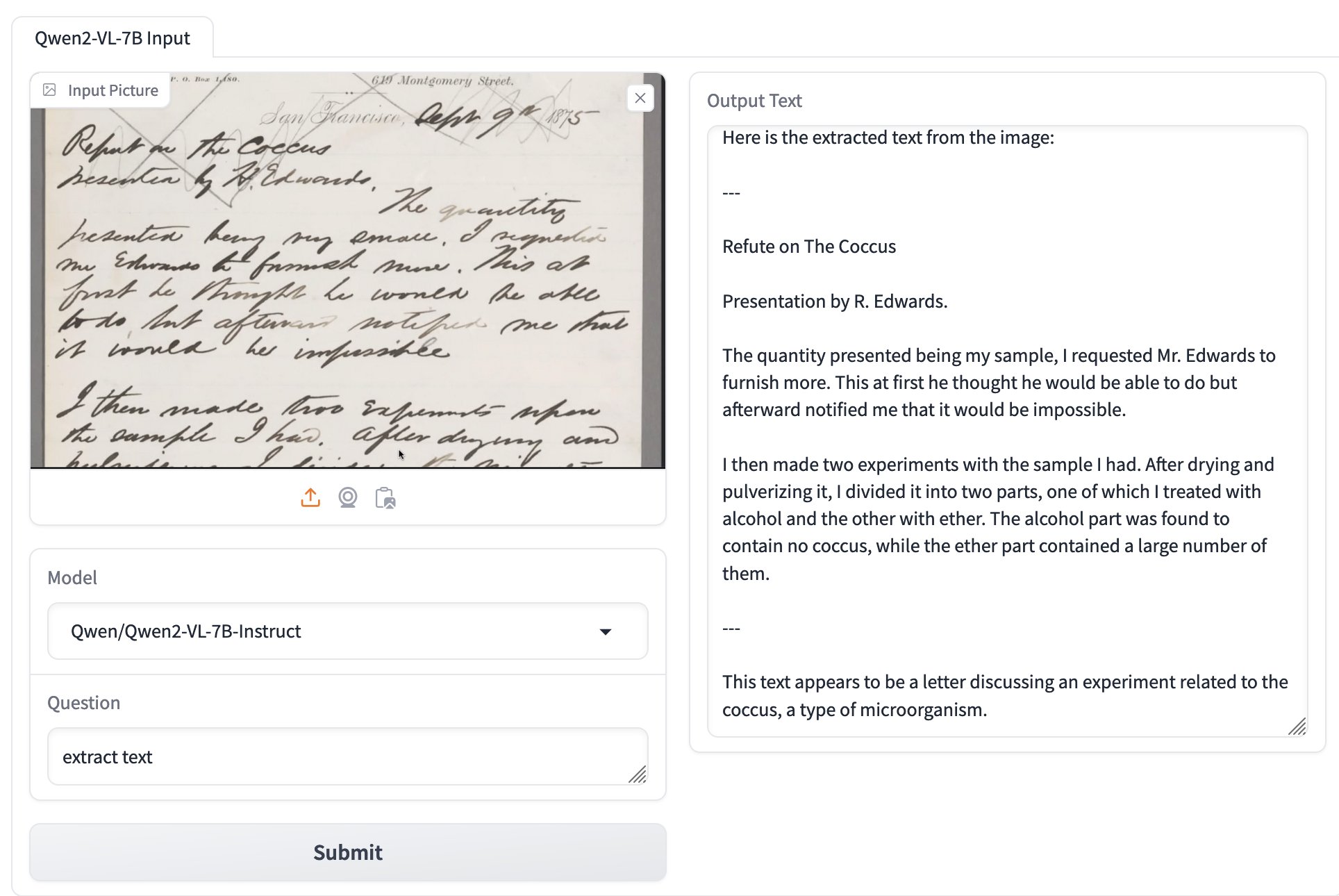
The model apparently runs great on NVIDIA GPUs, and very slowly using the MPS PyTorch backend on Apple Silicon. Qwen previously released MLX builds of their non-vision Qwen2 models, so hopefully there will be an Apple Silicon optimized MLX model for Qwen2-VL soon as well.
history | tail -n 2000 | llm -s "Write aliases for my zshrc based on my terminal history. Only do this for most common features. Don't use any specific files or directories."
— anjor
Art is notoriously hard to define, and so are the differences between good art and bad art. But let me offer a generalization: art is something that results from making a lot of choices. […] to oversimplify, we can imagine that a ten-thousand-word short story requires something on the order of ten thousand choices. When you give a generative-A.I. program a prompt, you are making very few choices; if you supply a hundred-word prompt, you have made on the order of a hundred choices.
If an A.I. generates a ten-thousand-word story based on your prompt, it has to fill in for all of the choices that you are not making.
OpenAI says ChatGPT usage has doubled since last year. Official ChatGPT usage numbers don't come along very often:
OpenAI said on Thursday that ChatGPT now has more than 200 million weekly active users — twice as many as it had last November.
Axios reported this first, then Emma Roth at The Verge confirmed that number with OpenAI spokesperson Taya Christianson, adding:
Additionally, Christianson says that 92 percent of Fortune 500 companies are using OpenAI's products, while API usage has doubled following the release of the company's cheaper and smarter model GPT-4o Mini.
Does that mean API usage doubled in just the past five weeks? According to OpenAI's Head of Product, API Olivier Godement it does :
The article is accurate. :-)
The metric that doubled was tokens processed by the API.

